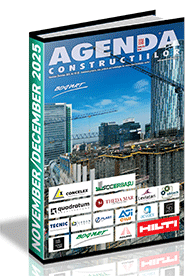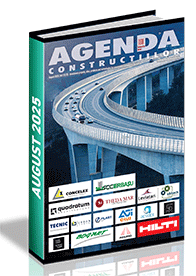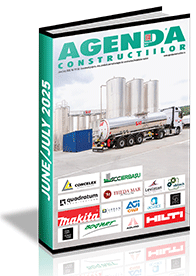| ANALISYS: Systems and automated solutions for energy efficient buildings |
| English Section Publicat de Ovidiu Stefanescu 19 Iun 2015 14:33 |
 Concepts like accessibility, universal design, avoidance of barriers and discrimination of any kind, increasing the comfort of use etc. are just some of the current concerns of architects, to be taken and translated into practice by system suppliers who are forced, therefore, to propose feasible solutions for each of the aforementioned elements. The insulating joinery seems at first glance pretty simple, but the reality is completely different. More increasingly, automation has started to become integral part of these assemblies. If such approaches was initial encountered in premium applications, after a short period is gradually integrated into the standard structure of the woodwork. Increasingly, modern assemblies of windows and doors became equipped with complex hardware, which provides special security features, easy operation, remote control etc. Given the rapid technological advances, plus the increasing awareness of beneficiaries, it is understandable the speed with which the results of research that aimed, until recently, only the elite of industrial fields came to be implemented on joinery segment. This trend is a consequence of the tightening of international law, which provides important cuts in resource consumption which can be obtained by overwhelmingly increase the energy efficiency of buildings of any kind. In this context, it has become almost mandatory the implementation of advanced solutions to the enveloping structures of buildings so that the underlying objectives of sustainability to become tangible. The financial efforts required to implement all the necessary innovations is fully offset by the benefits obtained subsequently by improve of productivity. Also, the net impact on the environment is diminished, given the fact that these solutions consume low amounts of energy and minimize heat exchange between the building and the external environment, so that significantly reduce consumption both in winter and in the summer. The costs can be supported including by accessing government funds in those states where authorities encourage such developments by providing incentives aimed at improving the sustainability parameters of the buildings. Concepts like accessibility, universal design, avoidance of barriers and discrimination of any kind, increasing the comfort of use etc. are just some of the current concerns of architects, to be taken and translated into practice by system suppliers who are forced, therefore, to propose feasible solutions for each of the aforementioned elements. The insulating joinery seems at first glance pretty simple, but the reality is completely different. More increasingly, automation has started to become integral part of these assemblies. If such approaches was initial encountered in premium applications, after a short period is gradually integrated into the standard structure of the woodwork. Increasingly, modern assemblies of windows and doors became equipped with complex hardware, which provides special security features, easy operation, remote control etc. Given the rapid technological advances, plus the increasing awareness of beneficiaries, it is understandable the speed with which the results of research that aimed, until recently, only the elite of industrial fields came to be implemented on joinery segment. This trend is a consequence of the tightening of international law, which provides important cuts in resource consumption which can be obtained by overwhelmingly increase the energy efficiency of buildings of any kind. In this context, it has become almost mandatory the implementation of advanced solutions to the enveloping structures of buildings so that the underlying objectives of sustainability to become tangible. The financial efforts required to implement all the necessary innovations is fully offset by the benefits obtained subsequently by improve of productivity. Also, the net impact on the environment is diminished, given the fact that these solutions consume low amounts of energy and minimize heat exchange between the building and the external environment, so that significantly reduce consumption both in winter and in the summer. The costs can be supported including by accessing government funds in those states where authorities encourage such developments by providing incentives aimed at improving the sustainability parameters of the buildings. |
ABONARE REVISTA (click aici): PROIECTE | INVESTITII | REVISTE | INDEX COMPANII
DATE DE CONTACT: Agenda Constructiilor & Fereastra - Tel/Fax: 021-336.04.16, 031-401.63.88




















































